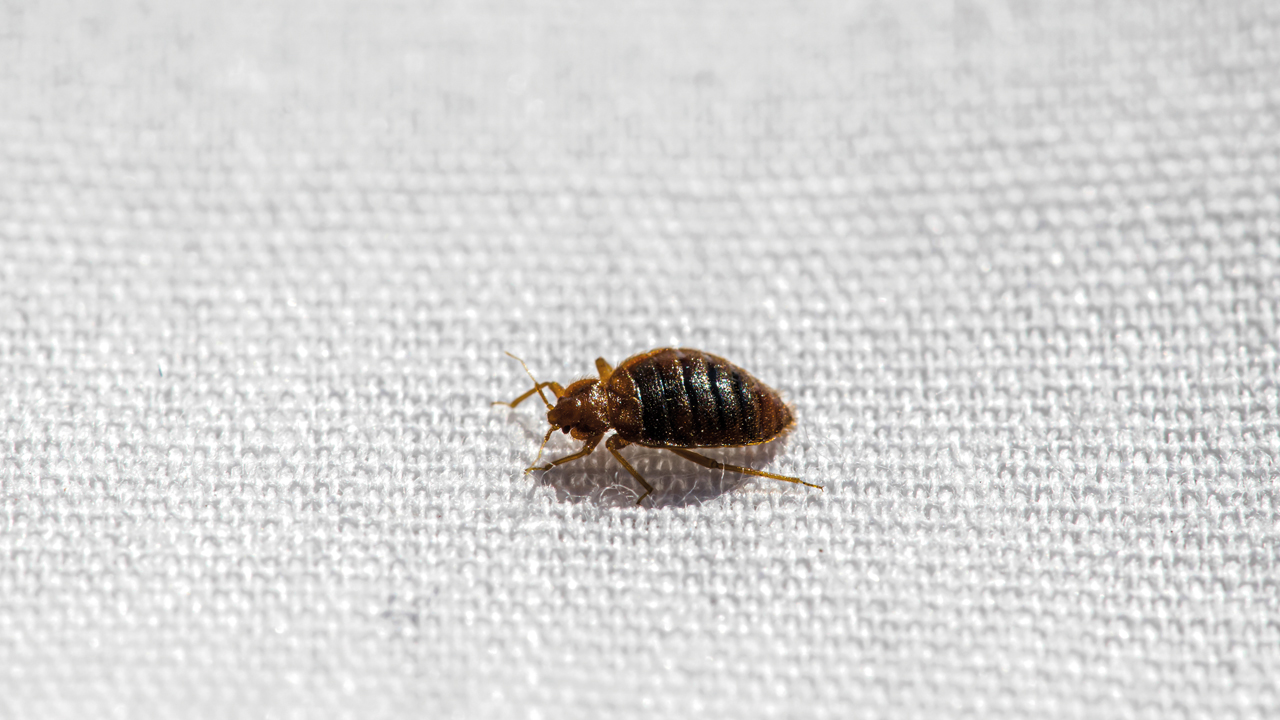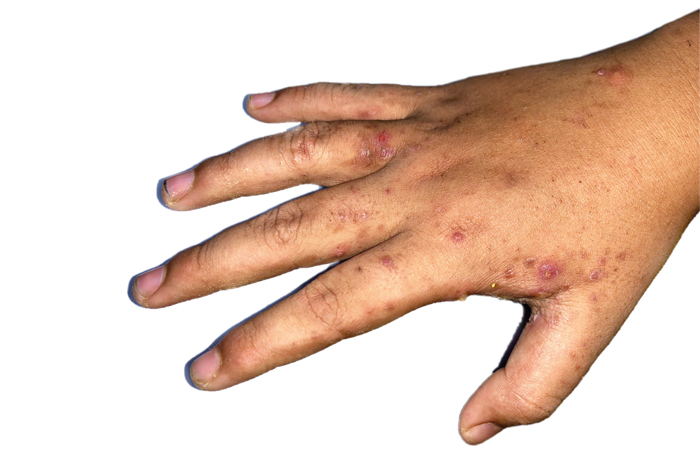In In-depth
Follow this topic
Bookmark
Record learning outcomes
The bedbug infestation has been likened to the 1982 sci-fi horror film ‘The Thing’ where people can be seen screaming and crying, running through the streets...or in this case off the latest Eurostar train.
Unless you’ve been living under a rock you will probably have heard about Paris being overrun by bedbugs. Now there has been ‘sightings’ of said pest on the London Underground and most recently a library was shut down in Ealing Central after the insects were spotted in its furniture.
Is IT time to panic? Perhaps, perhaps not, but either way you may be facing more questions in the pharmacy about bedbugs so let’s better understand the situation.
A brief history
“Bedbugs were once very common,” explains Richard Naylor from the Bed Bug Foundation (BBF). “There are reports from the 1930s stating that bedbugs occurred in every house in parts of London.
“After WWII, the introduction of a range of synthetic insecticides, such as DDT, almost wiped bedbugs out. For 50 years they were scarce.”
Bedbug numbers have been increasing worldwide since the late 1990s. Indeed, there has reportedly been a 65 per cent increase in bedbug infestations in the UK between the second quarter of 2022 and the second quarter of 2023, according to global pest control company Rentokil UK.
“Insecticide resistance has certainly played a part in this. Over the past few decades, we have lost many classes of insecticide on public health or environmental grounds,” says Richard. “Almost all professional insecticides used for bedbugs in the UK are now pyrethroids but bedbugs are already highly resistant to these. Dry residues of insecticide were once much more effective at controlling bedbugs than they are today.”
He adds that: “Bedbugs also benefit from the movement of people , good central heating, and high density living, where they can easily spread between rooms or apartments. So there are multiple factors that currently contribute to their success.”
The COVID-19 pandemic is thought to have thwarted the rise of bedbugs, alongside the temporary shutdown of the hospitality sector and movement of People. But as the world returns to normal, so do bedbug numbers.
So what are bedbugs?
Bedbugs are small insects usually around 5mm in length fully grown. They can be red, brown or dark yellow in colour and often live on bedding or furniture such as bedframes and/or mattresses, but they can be found under loose wallpaper and on clothing.
There are certain signs that Pharmacy teams can advise customers to look out for regarding bedbugs and these include:
- Bites: bites often occur at night and are commonly found on the face, neck and arms. Bites are usually itchy, red and raised, in groups or lines. They appear as reddish on lighter skin and purplish on darker skin
- Blood: spots of blood may appear on bedding either from bites or from the bedbugs themselves being squashed
- Brown spots: bedbug excrement appears as brown spots on bedding and furniture.
“Bedbugs bites are typically very itchy and swollen. They can take weeks to fade. Cooling the skin down is an effective way to reduce the itching,” says Richard. He points out that IT’s important to properly identify whether a bite is specifically from a bedbug. “Many People misdiagnose bedbug bites,” he explains. “People get skin reactions to all kinds of things and assume IT is bedbugs.” Richard advises IT is probably not a bedbug bite if:
- The problem has been going on for years and no bedbugs have ever been seen
- The bites are concentrated in one area
- The bites vary measurably in size
- The bites occur on skin that is normally covered while sleeping.
Identification
Like most ailments, IT’s important to start with prevention where possible. “You can prevent bringing bedbugs home with you from holiday by keeping your bags off the floor and away from the bed. Use the luggage rack if they provide one,” explains Richard.
“In an apartment block or housing complex, where bedbugs are spreading from a neighbour, the best option is to isolate the bed, so that bedbugs can’t get access.” Equally, bedbugs are unable to climb shiny surfaces, making metal beds harder to infest.
“You can protect wooden beds by placing the legs in purpose-built dishes, which capture bedbugs as they try to climb up,” he adds.
If customers are concerned that perhaps IT is too late and they are worried about an infestation, the BBF has some vital steps they can take:
1. Confirmation
“Each year, less than 20 per cent of the specimens and photographs that the BBF receives are bedbugs,” according to the organisation. The BBF has an identification service where customers can send in pictures of bedbugs but this isn’t the only way to confirm an infestation.
Bites and bedbug excrement are a useful form of identification, but customers should note that “although a few spots are often evident on the bedding, most of them tend to be found where the bedbugs are hiding, usually in a sheltered crevice in somewhere in the structure of the bed. On absorbent surfaces, such as bedding, they tend to wick into the fibres, but on unabsorbent surfaces, such as varnished wood, the spots tend to dry as raised lumps,” explains the organisation.
2. Decide whether to call a professional
Bedbugs are known to be somewhat difficult to eradicate as missing only one or two bugs may create a reinfestation. When deciding on whether to treat bedbugs themselves the BBF suggests that People consider the following:
- Who’s responsibility is it? For example, for those renting it is the responsibility of the landlord to deal with bedbugs
- The complexity of the situation. To what extent have the bedbugs spread?
- Finding the source of infestation. If living in an apartment block it would be important to consider if other flats have infestations
- Physical strength and good eyesight. For dealing with the bedbugs yourself, having to move furniture etc.
3. Self help advice
The BBF has a detailed list of self care advice that Pharmacy teams can refer customers to. IT covers such things as tools they need before they start dealing with an infestation, to effective clearing methods. Customers can be signposted to: bedbugfoundation.org/self-help/step-3 for more.
Pharmacy management
Unlike scabies (see boxout) there isn’t a dedicated ‘treatment’ for bedbugs because they do not actually infect the body. However, People may be seeking support for bites, to which Pharmacy teams can recommend a mild hydrocortisone cream to ease symptoms – however pregnant woman and children under 10 should visit their GP for advice before using.
Pharmacy teams can also recommend antihistamines which can help reduce itchiness from bites. Using a clean, damp cloth can help to reduce swelling and itchiness. Bites should also be kept clean and scratching or itching should be avoided.
“Bedbugs also benefit from the movement of people, good central heating, and high density living”
Scabies
Bedbugs can potentially be mistaken for a scabies infection, so it’s important to be aware of their differences.
Scabies is common, with an estimated 200 million cases worldwide. Those aged between 10-19 years of age have the highest infection rates in the UK, according to the National Institute for Health and Care Excellence (NICE).
Scabies is caused by a human parasite Sarcoptes scabiei, which is a mite usually 0.3 to 0.5mm in size that burrows under the skin. The mites live for four to six weeks, with females laying around 25 eggs. The eggs leave a raised rash and/or spots on the skin and create intense itching – especially at night.
Scabies is transmitted through close and prolonged skin contact, for example, it is unlikely to be spread via a handshake but is commonly transmitted during intercourse (although it is not a sexually transmitted infection (STI)). Symptoms usually occur somewhere between three and six weeks after infection.
Scabies is not especially serious but it does need to be treated – especially to stop its spread. Permethrin is recommended for the treatment of scabies and should be used every two to three days for one to two weeks. Treatment must be applied to all areas of the skin and is best applied at night. Everyone in the household should be treated to avoid reinfection. Alongside this, pharmacy teams can recommend that customers wash all clothing and bedding and/or it be placed in a sealed bag for up to three days. Customers should also avoid sharing towels, bedding or clothes.
Treatment must be administered with care. The British Association for Dermatologists (BAD) has a step-by-step guide pharmacy teams can share with customers to ensure they use treatment for scabies as effectively as possible.


